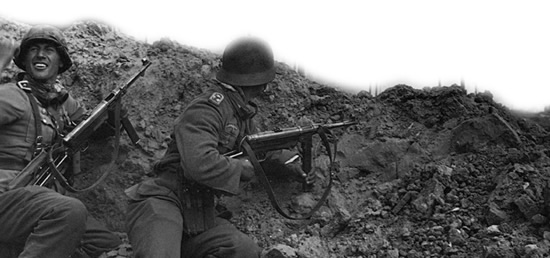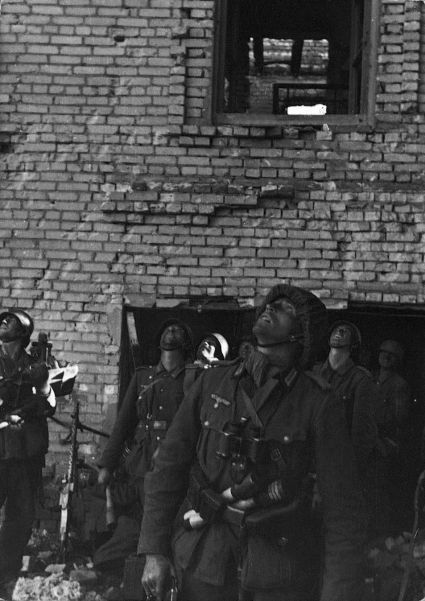2-24 November
Africa, Egypt/Libya

Field Marshal Erwin Rommel, severely lacking supplies, decides to withdraw from El Alamein. He delays this for 48 hours, after Adolf Hitler’s order to stand firm, but then continues following further Allied attacks. The Allies push him back to Tobruk, Benghazi, and then El Agheila by the 24th. Germany and Italy have lost 59,000 men killed, wounded, or captured. The Allies have suffered 13,000 killed, wounded, or missing. General Bernard Montgomery’s victory saves the Suez Canal and raises Allied morale. Alamein is the first major defeat of German forces during the war.
5 November
Africa, Madagascar
Vichy French forces in control of the island surrender.
8-11 November
Africa, Morocco/Algeria
Three Allied Task Forces, including five carriers, land 34,000 US troops near Casablanca, 39,000 US and British troops near Oran (accompanied by a parachute assault), and 33,000 troops near Algiers. US General Dwight D. Eisenhower, the supreme commander, aims to seize Vichy French North Africa as a springboard for future operations to clear the whole of North Africa of Axis forces. Admiral Jean François Darlan, Vichy commissioner in Africa, causes diplomatic turbulence by arranging a cease-fire and agreeing to support the Allies. The surprise invasion is a product of successful interservice planning, and Rommel is now fighting on two Fronts.
11 November
Western Front, Vichy France
German and Italian forces occupy Vichy France to prevent an Allied invasion from the former Vichy French territories in North Africa.
12-14 November
Pacific, Solomons
A US cruiser-destroyer squadron inflicts serious losses on a Japanese naval force of 18 warships attempting to bombard Guadalcanal’s Henderson Field, and also lands 11,000 troops.
17-28 November
Africa, Tunisia
British paratroopers land at Souk-el-Arba and join a limited Allied advance toward Bizerta. Thousands of German reinforcements are arriving daily, and the Allies are not yet ready for a large offensive. By the 28th, they are within 20 miles (32 km) of Tunis but are halted by Axis counterattacks. Allied reinforcements from Algiers are slowed by rain and mud. A stalemate develops across much of Tunisia.
19 November
Eastern Front, Ukraine

General Georgi Zhukov launches a Soviet counteroffensive at Stalingrad with 10 armies, 900 tanks, and 1100 aircraft, to be carried out along a Front of 260 miles (416 km). Soviet forces north and south of Stalingrad are to trap the Germans in a pincer movement. The attack is made during the frost, which assists tank mobility. It also coincides with the Allied North African landings, which divert Germany’s attention. Allied supplies have equipped the Soviet forces for the advance. The German Front buckles.
25 November
Eastern Front, Ukraine

The airlift to supply the German Sixth Army trapped around Stalingrad commences with 320 aircraft. The operation, which eventually requires 500 aircraft, lasts until February 1943.
27 November
Sea War, Mediterranean
Vichy French naval forces in Toulon are scuttled with the loss of 72 vessels, including three battleships, before the Germans can seize them.
30 November
Sea War, Pacific
At the Battle of Tassafaronga, five US heavy cruisers and seven destroyers attack a Japanese convoy of eight destroyers bound for Guadalcanal. Japan loses one destroyer; the US four cruisers.
